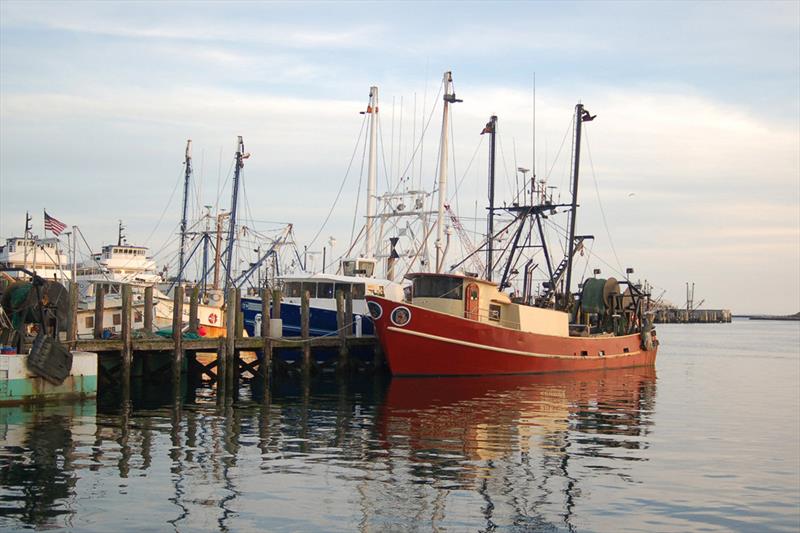
New reports highlight landings, value & economic impact of U.S. Commercial and Recreational Fishing
by NOAA Fisheries 17 Dec 2018 15:00 UTC

Fishing boats in Point Judith RI © NOAA Fisheries / Ariele Baker, NEFSC
NOAA Fisheries release two reports showing the number of landings and value of for U.S. fisheries as well as the economic impact of U.S. commercial and recreation fishing.
NOAA Fisheries has released Fisheries of the United States, 2017 and Fisheries Economics of the United States, 2016. Fisheries of the United States provides data on commercial landings and value and recreational catch. It also includes data on the fish processing industry, aquaculture production, imports and exports, and per capita seafood consumption. Our Fisheries Economics of the United States reports analyzes the economic impact of fisheries and related sectors, including employment, sales, and value-added impacts to the broader economy.
The continued, steady high landings and values of U.S. fisheries we've seen over the last five years points to the collective progress that our agency, the eight regional fishery management councils, and our stakeholders are making as we work to ensure the sustainability and economic stability of our nation's fisheries. Ending overfishing was a difficult process that took many years, but we are now enjoying the payoff from the steps we took as a nation to make our fisheries sustainable.
Fisheries of the United States, 2017
Fishing and seafood consumption in the United States increased in 2017, with landings and value of U.S. fisheries continuing a strong, positive trend. Across the nation, American fishermen landed 9.9 billion pounds of fish and shellfish in 2017, while the U.S. imported 5.9 billion pounds of seafood, up 1.6 percent. The landed 9.9 billion pounds of fish and shellfish in 2017 represents an increase of 344 million pounds (3.6 percent) from the year before. The value of the landings also increased to $5.4 billion, up $110 million (2.1 percent) from 2016.
Overall, the highest value U.S. commercial species were salmon ($688 million), crabs ($610 million), lobsters ($594 million), shrimp ($531 million), scallops ($512 million), and Alaska pollock ($413 million). By volume, the nation's largest commercial fishery remains Alaska pollock, which had near record landings of 3.4 billion pounds (up 1 percent from 2016).
Saltwater recreational fishing remains among the nation's favorite pastimes. The revised recreational fishing estimates survey demonstrates how recreational fishing remains a key contributor to the national economy, with 202 million marine fishing trips taken. The top six recreational U.S. species ranked by harvested weight were striped bass, bluefish, red snapper, sheepshead, yellowfin tuna, and red drum.
Fisheries Economics of the United States, 2016
This report provides the most up-to-date economic statistics on commercial and recreational fisheries as well as seafood-related businesses for each coastal state and the nation. A key piece of the latest report is the jobs, sales, income, and value added to the Gross National Product by the fishing and seafood industries. This provides a measure of how sales from commercial and recreational fishing ripple through state and national economies as each dollar spent generates additional economic effects.
In 2016, economic impacts from recreational fishing grew across the board. Nationally, 9.8 million saltwater anglers took recreational fishing trips in 2016 — a 9 percent increase in anglers from 2015. Saltwater recreational fishing supported 472,000 jobs, generated $68 billion in sales impacts across the economy, and contributed $39 billion to the GDP, all metrics that increased 7 percent from 2015 measurements.
The commercial fishing and seafood industry — harvesters, processors, dealers, wholesalers, and retailers — supported 1.2 million jobs in 2016, generating $144 billion in sales impacts and adding $61 billion to the GDP. The domestic harvest produced $53 billion in sales, up 2 percent from 2015, and supported 711,000 jobs across the entire American economy. American lobster and sea scallops had the largest revenue increases, with each product up $46 million in revenue in the past year.